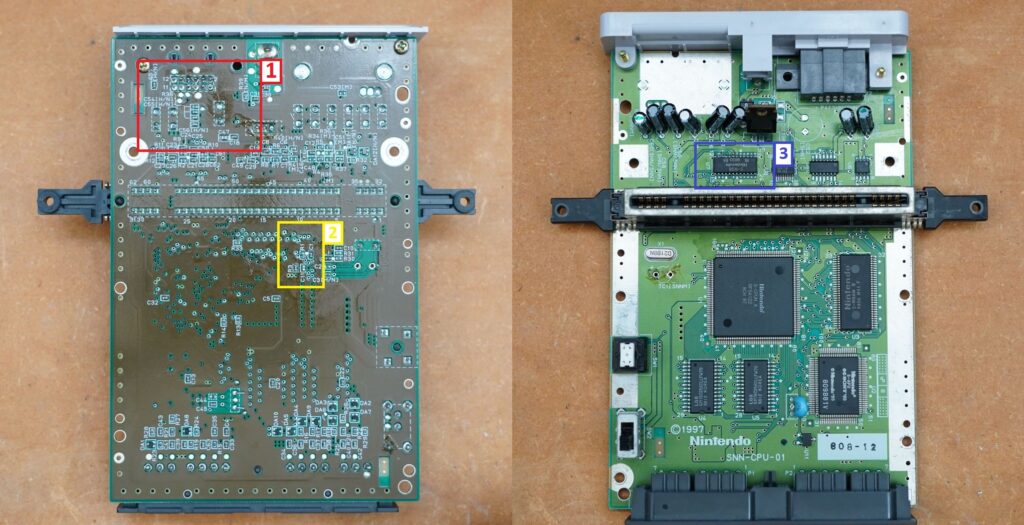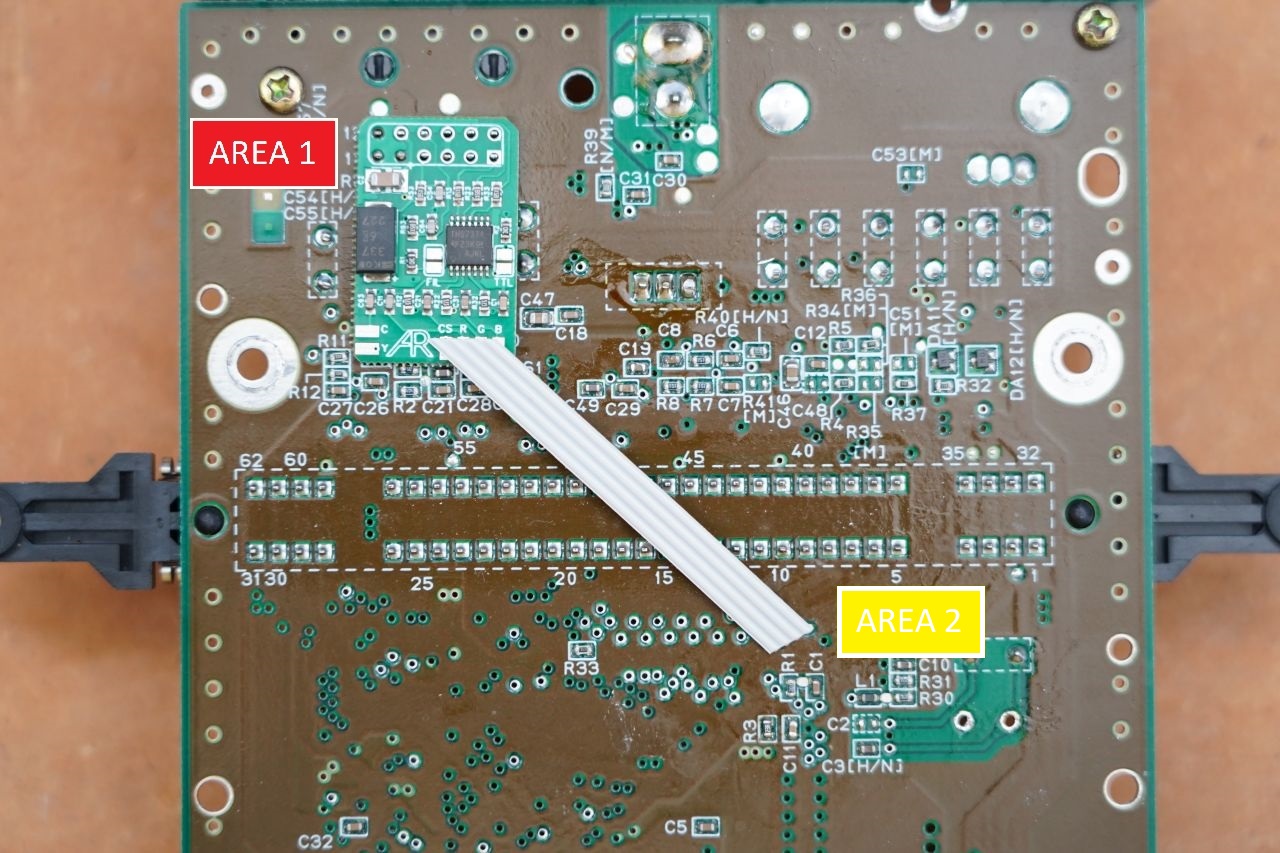This installation guide will cover the following procedures:
– RGB Bypass. This part of the mod adds RGB output to the SNES Jr.
– C-Sync Restore. This part of the mod adds C-Sync output to the SNES Jr.
– S-Video Restore. This part of the mod adds S-Video output back to the SNES Jr.
Installation Overview Image:

The areas of interest are numbered and color coded.
– Red is area 1
– Yellow is area 2
– Blue is area 3
Basic Installation Procedure:
Step 1: Remove the four gamebit screws from the SNES Jr. shell. You need to use a 4.5mm gamebit screwdriver for this.
Step 2: Remove all 7 Phillips head screws from the motherboard and remove the motherboard from the shell.
Step 3: Locate and trim the legs of the capacitors on the back side of the SNES Jr. motherboard near the AV Multi Out port.
Step 4: Place the SNES RGB Bypass mod onto the pins of the AV Multi Out and solder it in place as shown in the photo below.

Step 5: Remove 4 strands of the provided ribbon cable and cut it to the correct length to reach from the mod to the RGBS vias below the cartridge port.

Then strip and tin your wire with solder as shown in the next photo.

Step 6: Partially separate the wire on the left side of your ribbon cable so it can better reach the Csync via, then insert and solder your Csync R,G, and B wires into the vias indicated below.

Step 7: Solder you Csync, R, G, and B wires to the corresponding pads on the RGB Bypass board.

Step 8: Solder wires to the Y and C pads on the RGB Bypass board.

Step 9: Flip your SNES motherboard over and locate the S-RGB encoder chip above the cartridge slot. You should remove the heat sink from the 7805 voltage regulator so you have easier access to the S-RGB chip. Solder the Y wire to pin 17 and the C wire to the pin 12 of the S-RGB chip as indicated below.


Once you are finished soldering the S-Video wires, you should add some electrical tape to the 7805 heatsink as shown below to prevent any possible shorts.

Step 10: Check what type of RGB cable you will be using. If it is a cable intended for TTL C-Sync, then you need to close TTL jumper on the RGB Bypass board. You can do this by simply adding solder to the two pads until they bridge together. If you have a 75ohm C-Sync cable then you can leave the TTL jumper open. If you are using a Sync on Composite, or Sync on Luma cable then the TTL jumper doesn’t affect you at all (but I would go ahead and close it just in case you switch to a TTL cable in the future).

Optionally you can also close the jumper labeled FIL, that will turn off the low pass filter built into the THS7374 amplifier chip. You may want to turn this off if you are outputting to a scaler that already has a low pass filter built in. Doubling up on the low pass filter could result in a softer image. If you are not outputting to a device with built in filtration then you will definitely want to leave this jumper open so the THS7374 can filter out all of the high frequency noise that would end up in your image if left unfiltered.
Step 11: Reassemble your SNES and enjoy!
